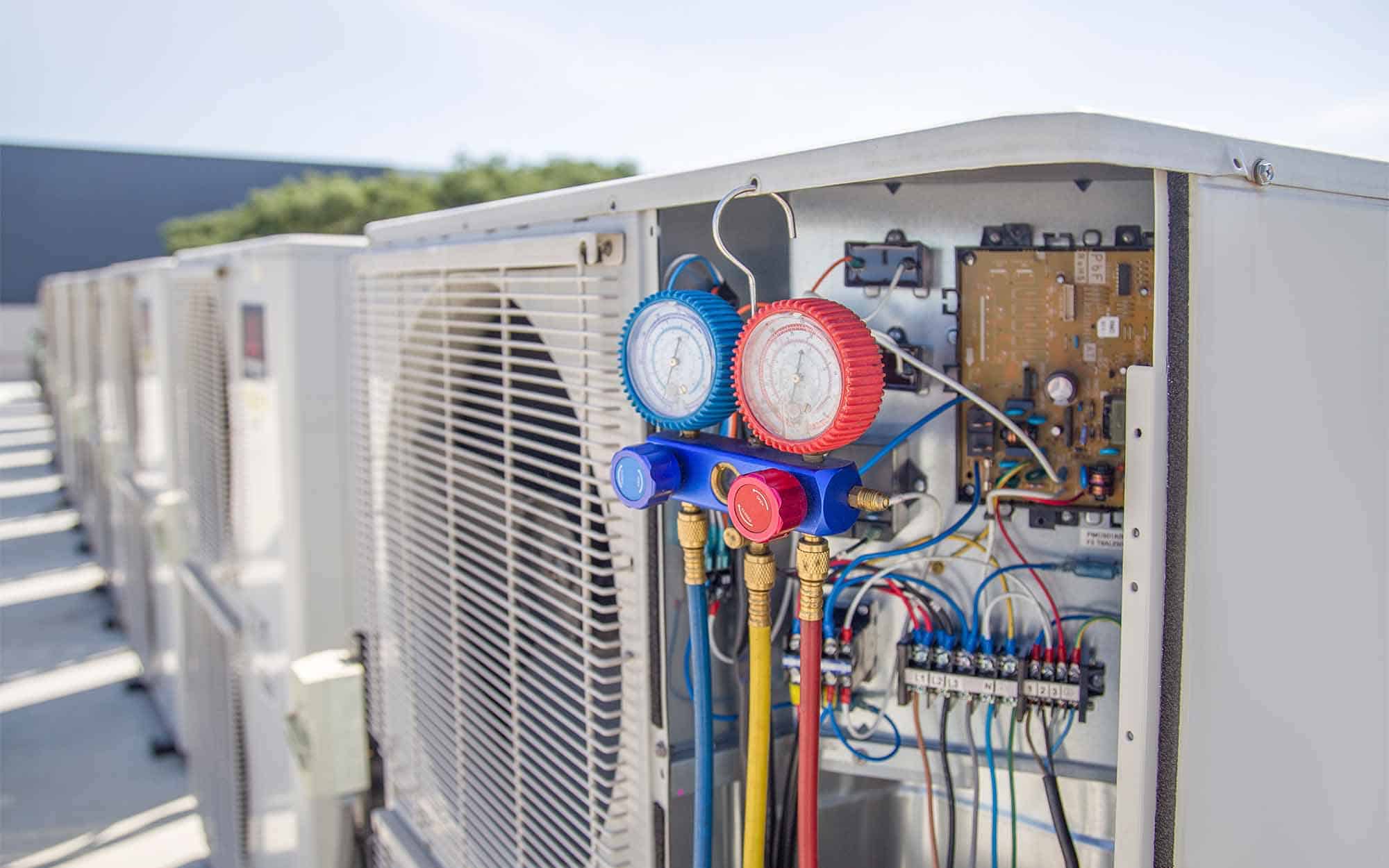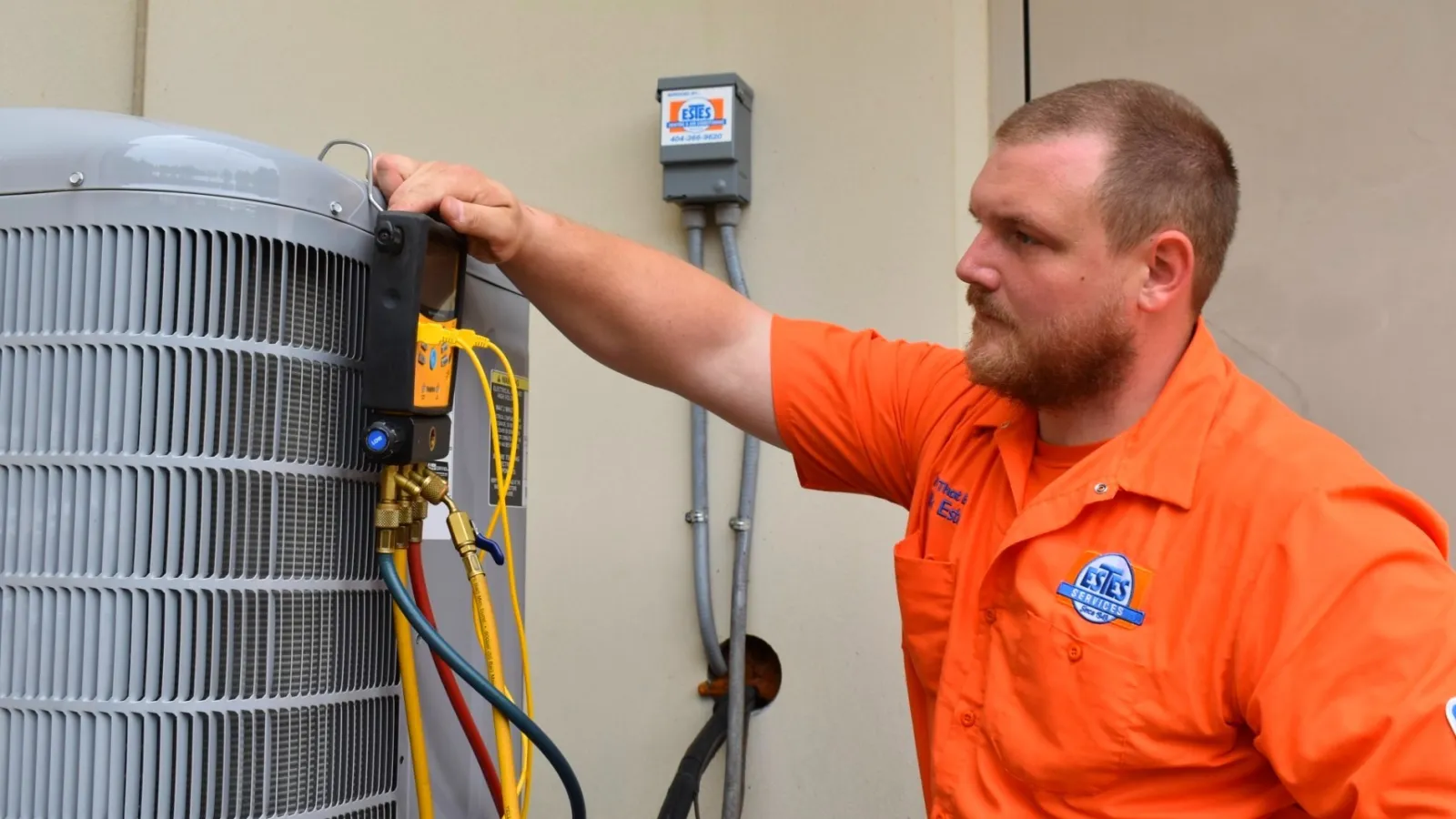Avoid Costly Repairs with Scheduled heat pump service
Avoid Costly Repairs with Scheduled heat pump service
Blog Article
How a Warmth Pump and Heating System Collaborate to Maximize Your Home's Heating Efficiency
Understanding exactly how a warmth pump and heating system work together is vital for homeowners seeking efficient heating remedies. Each system has its staminas, giving a well balanced method to home convenience. The warm pump excels in moderate temperature levels, while the heating system supplies rapid heat during severe cold. This synergy not just decreases energy costs yet additionally improves the life-span of both devices. What factors influence this cooperation, and just how can home owners maximize their advantages?
Recognizing Heat Pumps: Exactly How They Function
Although many individuals might be strange with their internal operations, heatpump play a necessary duty in modern-day furnace. These tools run by moving warm from one location to an additional, making use of the concepts of thermodynamics. In colder months, a heatpump essences warm from the outside air, ground, or water, and transfers it inside your home to warm up the home. Conversely, during warmer months, it can reverse the procedure, working as an air conditioner by expelling warm from inside to the outside.Heat pumps include an evaporator, compressor, development, and condenser valve. The cooling agent within the system soaks up warmth as it evaporates at low temperatures and stress. The compressor after that increases the stress and temperature level of the cooling agent, permitting it to release heat as it condenses. This efficient procedure can considerably decrease power usage contrasted to standard home heating approaches, making heat pumps a sustainable selection for environment control in homes.
The Role of Heaters in Home Heating
Heating systems play an important role in home heating by offering a trusted source of heat throughout the colder months. They operate by producing heat via combustion or electrical resistance, distributing it throughout the home by means of air ducts or radiant systems. The performance of a heating system is frequently measured by its Annual Gas Application Effectiveness (AFUE) ranking, which suggests just how efficiently the device converts fuel right into heat.Furnaces can use various energy resources, consisting of gas, gas, electrical energy, or oil, permitting homeowners to choose one of the most suitable option for their demands. Unlike warm pumps, which may have a hard time in extreme cold, furnaces preserve regular performance, making certain that indoor temperature levels continue to be comfy no matter outside conditions. Additionally, contemporary heating systems often come geared up with innovative modern technology, such as variable-speed blowers and wise thermostats, improving their performance and responsiveness. This versatility makes heating systems an important part in comprehensive home heating methods.

Advantages of Utilizing Both Equipments Together
Integrating the toughness of both heating systems and warmth pumps can lead to an extra effective and reliable home heating remedy. Using both systems allows property owners to make the most of the heat pump's power performance during milder temperature levels while relying upon the heating system for even more extreme cold problems. This dual approach can significantly reduce power costs, as warmth pumps take in less electricity than standard home heating approaches when temperatures are moderate.Additionally, making use of both systems together can enhance convenience levels in the home. Heatpump can offer consistent, even heating, while heating systems can swiftly elevate ambient temperature levels when needed. The integration of both systems can prolong the life expectancy of tools by lowering wear and tear on each system, as they share the workload. Inevitably, property owners can take pleasure in a balanced, economical heating option that adjusts flawlessly to differing weather, making sure a cozy and welcoming home throughout the winter season months.
Just How Warm Pumps and Furnaces Complement Each Various Other
They produce a complementary home heating system that makes best use of effectiveness and convenience when homeowners integrate warmth pumps and furnaces. Heatpump run by transferring warm from the outdoors air or ground, making them very reliable in moderate environments. They succeed during milder temperature levels, giving cost-efficient heating. Conversely, furnaces produce warmth with combustion or electrical resistance, supplying strong, immediate warmth throughout extreme cold conditions.The combination of these 2 systems allows for vibrant modifications based upon temperature changes. During warmer months or milder winter days, the warmth pump can take the lead, preserving energy and decreasing expenses. As temperature levels drop, the furnace can flawlessly engage, ensuring constant heat throughout the home. This harmony not only optimizes energy usage but additionally boosts the life-span of both systems, as each system operates within its optimal performance array. Together, they create a well balanced environment that adapts to differing climate needs.
Maximizing Efficiency: Tips for Homeowners
House owners can improve their home heating performance through several sensible approaches. Developing a normal maintenance routine, integrating clever thermostat modern technology, and executing reliable insulation and sealing solutions are key steps. These steps not only improve comfort yet additionally decrease power expenses.
Routine Upkeep Set Up
To ensure optimal heating efficiency, establishing a why not try these out normal upkeep schedule is necessary for any type of home. Property owners should focus on regular evaluations of both heatpump and furnaces to identify peak performance. This site link consists of transforming air filters every one to three months, as clogged up filters can significantly minimize performance. Additionally, organizing specialist maintenance at the very least yearly enables technicians to determine and resolve potential problems prior to they rise. Homeowners ought to likewise clean up the heatpump's exterior system to stop particles buildup that can prevent airflow. By sticking to a normal upkeep timetable, homeowners not only enhance their heating systems' effectiveness however likewise prolong their life expectancy, leading to greater comfort and reduced energy prices throughout the cooler months.
Smart Thermostat Assimilation
Integrating a smart thermostat into a home furnace can substantially improve energy efficiency, specifically as it enables accurate control over temperature setups. These gadgets can learn the homeowner's timetable and preferences, automatically readjusting the temperature to maximize convenience while reducing power use. As an example, they can decrease heating throughout times when the home is vacant, decreasing unneeded consumption. Many clever thermostats also supply real-time energy usage information, allowing homeowners to make enlightened choices about their heating behaviors. In addition, remote accessibility by means of smartphone apps permits users to readjust settings from anywhere, making sure the home is cozy upon return. Generally, clever thermostat combination not just improves comfort yet considerably adds to power savings and effectiveness.
Insulation and Securing Solutions
Smart thermostats play a vital role in power efficiency, however their performance can be significantly improved by correct insulation and sealing services. Home owners should prioritize protecting floors, walls, and attic rooms to lessen warmth loss. Top quality insulation materials, such as spray foam or fiberglass, can considerably boost thermal resistance. In addition, sealing spaces around ducts, home windows, and doors stops chilly air seepage and warmth retreat. Weatherstripping and caulking work approaches for dealing with these leaks - furnace replacement. Routine assessments for air leakages, together with making use of blower door tests, can help recognize trouble locations. By buying insulation and sealing, property owners can optimize the performance of their furnace, inevitably bring about lowered power usage and lower energy expenses
Typical Myths Concerning Warm Pumps and Furnaces
What mistaken beliefs surround heatpump and heaters? Lots of individuals mistakenly think that heatpump are ineffective in cooler find out environments. Actually, modern-day warm pumps are created to operate efficiently also in reduced temperatures, giving trusted home heating throughout winter season. Another usual myth is that heaters are always extra effective than heat pumps. This depends on the details power resources and efficiency rankings of the systems in inquiry. Some may additionally believe that making use of both systems concurrently is unnecessary, however as a matter of fact, this combination can maximize heating performance, particularly throughout severe weather. Additionally, people typically assume that warm pumps call for constant maintenance, when in reality, they have similar maintenance requires to typical heating unit. By unmasking these myths, homeowners can make more enlightened choices regarding their heating choices, inevitably leading to enhanced convenience and power efficiency in their homes.
Maintenance Factors To Consider for Combined Equipments

Regularly Asked Questions
Can Warm Pumps Job Effectively in Very Cold Climates?
Warmth pumps can struggle in very cool environments as a result of decreased effectiveness and warmth extraction restrictions. Advancements in technology have led to models developed for better performance in such conditions, improving their practicality in severe environments.
For How Long Do Warm Pumps and Furnaces Commonly Last?
Heatpump commonly last 15 to two decades, while heating systems have a life expectancy of 15 to thirty years. Regular maintenance can extend their long life, ensuring efficient procedure and lowering the demand for early replacements.

What Is the Average Expense of Putting Up Both Systems?
The average expense of mounting both a heat pump and a heating system normally ranges between $5,000 to $10,000 - ductless mini splits. Aspects influencing this expense consist of system size, setup intricacy, and regional labor rates
Exist Tax Obligation Rewards for Making Use Of Energy-Efficient Heating Solutions?
Numerous house owners make inquiries about tax obligation motivations for energy-efficient heater. Different government and state programs often offer credit reports or discounts, urging the fostering of lasting modern technologies to lower power intake and promote environmental obligation.
Exactly how Do I Select the Right Dimension Heatpump and Heating System?
Choosing the ideal size warm pump and heating system entails determining the home's square video footage, thinking about insulation quality, and examining regional environment. Consulting a specialist can assure ideal system performance and energy efficiency based on particular needs. ductless mini splits. Understanding how a heat pump and heater job with each other is crucial for homeowners looking for reliable home heating options. In chillier months, a heat pump extracts heat from the outdoors air, ground, or water, and transfers it inside to heat the living area. When property owners incorporate warmth pumps and heating systems, they produce a complementary home heating system that maximizes efficiency and convenience. Warm pumps operate by moving warm from the outside air or ground, making them highly reliable in modest climates. Warmth pumps can struggle in exceptionally cold environments due to lowered effectiveness and heat removal constraints
Report this page